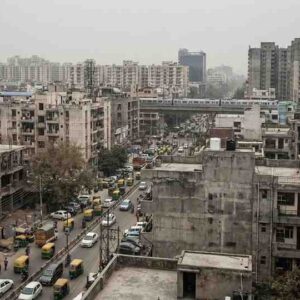Lucknow, 2025— In Uttar Pradesh (UP), a state where agriculture forms the backbone of the economy, a series of ambitious government schemes are spearheading an agricultural revolution. These initiatives aim to modernize farming practices, increase productivity, and improve the livelihoods of millions of farmers. This article examines how these transformative measures are reshaping UP’s agricultural landscape and, by extension, its entire economy.
Key Government Schemes Fueling the Agricultural Revolution
- Pradhan Mantri Krishi Sinchai Yojana (PMKSY)
- Objective: To expand irrigated farmland and introduce sustainable water management practices.
- Impact: This scheme has already increased irrigation coverage in UP, enhancing crop yields and reducing dependence on monsoon rains.
- Kisan Credit Card (KCC) Scheme
- Purpose: Provide farmers with timely access to credit at subsidized rates.
- Achievements: Over 10 million farmers in UP have benefited from the KCC scheme, enabling them to invest in quality seeds, fertilizers, and newer technologies.
- UP Agroforestry Policy 2024
- Aim: Promote agroforestry to diversify income sources for farmers and enhance green cover.
- Progress: The policy has led to the planting of over 50 million trees across the state, contributing to environmental sustainability and providing additional income through the sale of timber and non-timber products.
Economic Impact of Enhanced Agricultural Practices
- Increase in Agricultural Productivity: Enhanced irrigation and better farming equipment have led to a significant increase in the state’s agricultural output, positioning UP as a leading producer of wheat and sugarcane.
- Boost to Agro-based Industries: With higher raw material availability, industries such as food processing and horticulture have seen robust growth, further stimulating UP’s economy.
Challenges and Innovations
- Market Access and Supply Chain Issues
- Challenge: Despite increased production, many farmers struggle with accessing broader markets and face losses due to inefficient supply chains.
- Innovative Solutions: The introduction of digital platforms for direct farmer-to-consumer sales and government partnerships with private firms for logistics support.
- Climate Change and Sustainable Farming
- Problem: Climate variability threatens the sustainability of agricultural gains.
- Response: Government initiatives promoting climate-smart agriculture practices and the use of drought-resistant crop varieties.
Stakeholder Opinions and Future Directions
- Views from Farmers: While many acknowledge the benefits of the new schemes, some express concerns about the complexity of accessing government subsidies and the need for more direct support.
- Expert Analysis: Economists suggest that while these schemes are a step in the right direction, continuous adaptation and expansion are necessary to address emerging challenges like global market fluctuations and climate change impacts.
Conclusion: A New Era for UP’s Agriculture
The government’s concerted efforts to revolutionize agriculture in Uttar Pradesh are paying dividends, transforming not just the farming sector but energizing the entire state economy. As these schemes mature and expand, their full impact on both the economic landscape and the lives of millions of farmers remains a promising horizon. However, for UP to truly capitalize on these initiatives, ongoing refinement, farmer education, and infrastructural improvements will be essential to ensure that the roots of this agricultural revolution grow deep and wide.












